Trade is a specific human activity. It is associated with the process of acquiring and marketing products. Trade includes a complex of economic and technological operations. They provide an exchange of wealth. Of particular importance in this area is the accounting of goods and services. 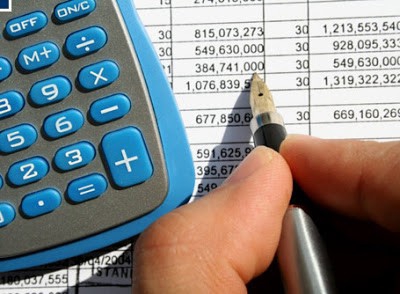
General characteristics of the exchange
Acting as a branch of the economy, trade forms consumer market products. Within its framework, specialized enterprises provide products to customers. The function of the industry as a whole consists, therefore, in the current regulation of the consumer market. Trade provides sales of goods through commercial transactions. Thanks to this, the process becomes the subject of activity of special enterprises and other business entities.
Industry challenges
Trade contributes to the provision of goods and services to the individual needs of all sectors of society. It includes the interaction of enterprises of different ownership and population. The purchase of goods for their own income is carried out by people through a distribution network. During a certain period, products may be in circulation. However, in the end, it falls into personal ownership.
The sale of goods to the public acts as the final and determining stage of their circulation. The market, being an economic category, covers the corresponding production, distribution relations, interactions in the framework of the exchange and the relationship of these processes. Trade is presented as a form of these ties. She participates in the formation of market relations between labor and consumer measures. Trade affects the size of the real income of the population, stimulates the economic activity of people. Sales are carried out in different modes. The most common in Russia is considered retail and wholesale. Sales can also be carried out on a commission basis.
Terminology
The basic concepts are explained in the State standard R 51303-99, approved by the Decree of the State Standard and entered into force in 2000. In accordance with it, trade is the type of commercial activity that is associated with the purchase and sale of products and the provision of services to customers. The wholesale regime involves the purchase of products with subsequent resale or professional use. Retail should be understood as trade and the provision of services to consumers for family, personal, home use, not related to commercial activities. The commission mode involves the transfer to third parties of products under commission agreements for carrying out entrepreneurial operations with them. 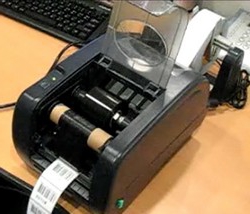
Accounting of goods in accounting
Pricing of products is carried out on the basis of the monetary expression of its value and operations for its sale. Finished products in the framework of various operations (release from production, shipment to customers, sales) are accepted for accounting at actual cost. It is equal to the value of all costs related to the manufacture and supply to consumers. In multi-product industries, the actual cost can be determined only at the end of the reporting period. Accounting for the movement of goods, as well as their availability is usually carried out at appropriate prices. As them can be used:
- Normative (planned) cost.
- Market (contractual) price.
- Reduced (incomplete) production costs, which characterizes direct costs.
- Other conditional products price expression tools.
Valuation of finished products
In the Regulation on reporting, in paragraph 60, it is established that accounting for goods is carried out at the purchase price or at selling prices. The same situation is present in paragraph 13 of PBU 5/01. Valuation of goods is the choice of the accounting price at the enterprise at which the write-off and posting of products will be carried out.
This should be recorded in the relevant documentation. If the movement of goods is recorded at purchase prices, their value is formed in accordance with the rules provided for in PBU 5/01 in paragraph 6. In this case, the price includes all expenses related to the purchase of products, excluding VAT. Enterprises can keep records of the sale of goods at a weighted average cost. In this case, the average unit price of each type of product participating in the turnover in the reporting period is determined. Also, the accounting of goods in trade can be carried out at the cost of the first or last for the purchase period. 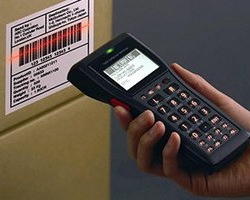
FIFO Method
It represents the accounting of goods at the cost of the first (including the price of balances) during the reporting month during which purchases were made. This method provides for the evaluation of the procurement of products according to the actual assessment. When selling and disposing of products for other needs, write-offs are carried out at the cost of the first purchases for the reporting month, including the price of items listed at the beginning of this period. For this, the cost of goods not used at the end of the month is established. It is determined based on the costs of recent purchases. The cost of sales of products is calculated by subtracting from the price the remainder of the products at the beginning of the month, including the value of goods received during it, the amount attributable to the amount remaining at the end of the month. The distribution of accounts is carried out in accordance with the average unit of each type and quantity sold or retired for other needs.
LIFO Method
Such an organization of accounting for goods helps to ensure compliance with current expenses and income, and also allows you to take into account the impact of inflationary processes on the financial results of the company. The LIFO method involves evaluating products at the end of the month based on their quantity and the assumption that their value is formed from the costs of their first purchases. The selling price of products is calculated by subtracting from the amount of balances at the beginning of the month, including the units received during the period, the amount that falls on the number of products remaining at the end of the month. The distribution of accounts is based on the average cost of the sample from each type of product and the volume of products sold. 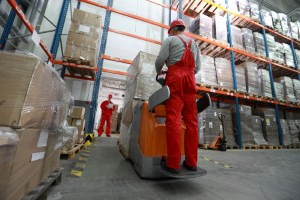
Specificity of the application of methods
Accounting for the sale of goods and their stocks in the indicated ways directs the company to form an analytical assessment of products not only by type, but also by individual lots. The Regulation on the analysis of material and production reserves provides another method by which the actual cost of all retired products is determined - the write-off of the value of each unit. This method is rarely used. The application of this method is advisable only for products, each unit of which has a high price and is usually sold individually.
The considered methods for assessing retired products are used in the inventory at the actual cost of acquisition. The company, after conducting a comparative analysis of existing methods, chooses for itself the order in which goods will be recorded. It should be fixed in the relevant documentation. In this case, the company must consistently apply an acceptable method in practice.If the accounting of goods is carried out using account. 15 and 16, then with the count. 41 products are written off at the appropriate inventory price. Then, using a special calculation, the amount of deviations that fall on the marketed products is removed.
Retail Accounting
For effective management of the company’s activities, it is necessary to have accurate, objective, complete, sufficiently detailed and timely economic information. This task is achieved through accounting. The main object in this activity is products. In this regard, the authorized department of the enterprise must ensure accounting of the receipt of goods at the enterprise, as well as reflection of operations related to their disposal.
Business objectives
Accounting provides:
- Control over the safety of products.
- Timely provision to the head of the enterprise of information on gross (actual) income, state of stock and efficiency of its use.
The tasks that an activity provides can be accomplished only with proper planning. Deficiencies that may arise during it are the reasons for the backlog of accounting, the untimely provision of reporting and other information. Large time gaps between the emergence of information and its use creates obstacles to increasing economic efficiency, profitability of the enterprise. Deficiencies in accounting can lead to its confusion, the formation of conditions for the theft of material assets, and the increase in the cost of maintaining responsible personnel. 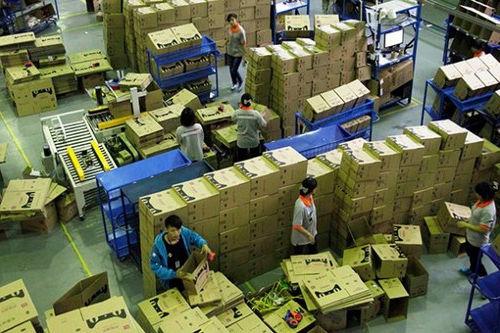
General order
The rules and terms during which accounting for the receipt of goods (by completeness, quantity, quality), as well as their documentation, is governed by the existing technical delivery conditions, contracts and instructions. All operations with products are divided into two categories. The first refers directly to the receipt of goods in the company. The second category consists of operations for the disposal of products. Accounting for goods in retail trade is carried out in accordance with the accompanying documentation, terms of delivery, rules of cargo transportation (invoices (freight, rail, etc.), invoices or bill of lading).
Reporting
The accounting of goods is accompanied by the compilation of special documentation, which reflects the availability and turnover of products. Its registration is carried out by a materially responsible person. In the input part of the report, each document (number and date, source of receipt of products, their amount) is entered separately. After that, the total value of capitalized products is calculated, the total with the balance at the beginning of the reporting period. The consumable part contains information on the documents on the disposal of products. In particular, data on the direction of products, date and paper number, and the total amount are entered. Next, determine the balance of products at the end of the reporting period. Each type of expense and income contains documents arranged in chronological order.
The total number of securities on the basis of which the report is compiled is indicated at the end in words. The documentation must be signed by the materially responsible officer. The report is compiled in 2 copies (carbon copy). The first is stapled with documents arranged in sequence and delivered to the accounting department. The chief specialist of the department in the presence of the responsible person checks the report, indicates the date and certifies both copies with his signature. The first remains in accounting along with attached documents. The second copy is handed over to the materially responsible employee. Next, each document is checked for compliance of the transactions with the law, pricing policy, calculation, taxation. 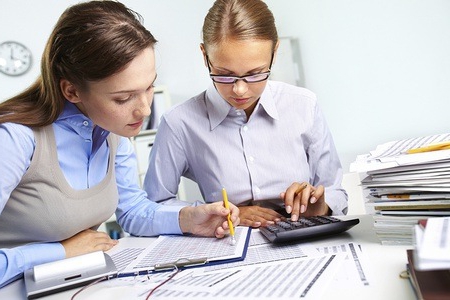
Accounts
Accounting for goods in stock and in circulation has its own characteristics.One of them consists in the fact that their reflection in the middle. 41 is carried out at the price of receipt, to which the premium is added. If the products are not at the enterprise as their property, then their accounting is kept on an off-balance account. 002, which records inventory held for safekeeping. In the event of questions regarding payment or under the terms of the contract, products are prohibited from being sold until the delivery obligations are settled. Accounting for goods that are accepted on a commission basis is carried out on an off-balance sheet account. 004. Analytical evaluation of products can be carried out not only by materially responsible persons. This activity is also the responsibility of accounting. The main objective of such an assessment is to obtain the information needed to manage product inventories. At the end of the month 41 in the accounting register summarized. They are verified with the corresponding indicators for the remaining accounts.
Inventory
In the course of trading retail companies, goods are circulated daily. To control the availability and condition of material assets, an inventory of containers and products is carried out. During it, the correspondence of the actual number of products and packaging at the time of checking their balances according to information from the financial statements is established.
Documentation
The accounting of goods in the warehouse is accompanied by the filling in of acceptance bills, route sheets, acts and other papers. All these documents must be signed by the head of the unit, which handles the product, as well as the person responsible for storage. Bulky cargo is usually accepted by the customer at the place of manufacture, assembly and assembly. The responsible person shall reflect information on the release of finished products and their receipt at the warehouse in a special accounting card. Its form and content are similar to the document for the receipt of materials (f. No. M-17). 
Quantification
It is carried out in units corresponding to the physical properties of the product (weight, area, volume, in pieces or linear parameters). Homogeneous products can be considered in conditionally natural terms. For example, canned goods are accounted for by banks. An analytical assessment is carried out not only in quantitative, but also in cost terms.
Sales
The release and accounting of goods in the store is carried out on the invoice. As a standard form can serve as an M-15 form. Enterprises involved in various manufacturing sectors use specialized forms of invoices and other primary documents for processing. They contain the required details, reflects the main properties and characteristics of the shipped products, the name of the division of the company that carries out the vacation, the name of the buyer and the basis for the transfer of products to him. The invoice is filled in accordance with the order of the head of the enterprise or a person authorized by him, as well as the contract with the customer (buyer).
Shipment and Export Control
For large and medium-sized enterprises, the movement scheme of primary documentation is recommended. It includes the following steps:
- In the warehouse with finished products or in the sales department, an invoice is issued in 4 copies. They are transferred to the accounting department, where they are registered in the journal and certified by the signature of an authorized person.
- Sighted invoices are transferred to the sales department. One copy takes a materially responsible person. For him, the invoice acts as the basis for the release of finished products. A second invoice is issued for the invoice. The third and fourth copies are transferred to the buyer of the product. He, in turn, affixes a signature on the invoices, which certifies the fact of the transfer of products to him.
- When products are exported by the buyer, one copy is handed over to the security officer at the checkpoint. The remaining invoice acts as an accompanying document.
- The security officer registers invoices in a special journal and then transfers them according to the inventory to the accounting department.
- Authorized units periodically reconcile information on products sold from the warehouse and actually exported products by comparing the invoices with the registration journal.
Additionally
If the products are handed over to the transport company, then the forwarder who accompanies the goods is given a receipt on the receipt of the values. She, together with the invoice, is returned to the accounting department to issue an invoice and payment documentation. Primary papers on acceptance of finished products, their shipment to the consumer are accepted from the storekeeper and checked. Further they are used in the formation of registers of synthetic and analytical accounting. Reflection of products in the reporting as sales is carried out on invoices, receipts of the transport company, acts of work performed and other documents.
Conclusion
In addition to the reporting described above, enterprises also maintain tax records of goods. Upon receipt of products from domestic suppliers, the cost in one and other documents will coincide. If the products are purchased for other reasons, then there is a possibility of discrepancies. In practice, the following situations are noted when a mismatch is inevitable:
- Gratuitous receipt of products.
- Receiving products for foreign currency.
- Detection of surplus in the inventory process.
When buying for foreign currency, discrepancies occur in case of advance payments. In accounting, the value of the goods in such situations is set at the rate that was in effect on the date the money was deducted. This requirement is present in PBU 3/06. For the purposes of income taxation, the value of goods purchased for foreign currency is determined in terms of rubles at the date they are taken into account.








